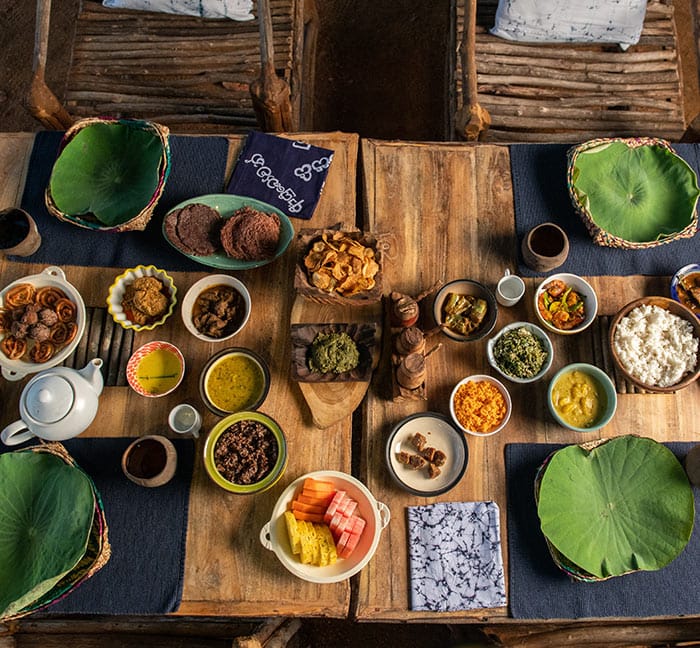Introduction: Understanding Sri Lankan Cuisine
Sri Lankan cuisine is a unique blend of flavors and spices that are deeply influenced by the country’s cultural and religious diversity. The cuisine is characterized by the use of aromatic spices, coconut, and rice. Sri Lankan food is typically spicy, but it can also be mild, depending on the dish. The country’s cuisine is rooted in traditional Ayurvedic principles of food, which emphasizes the balance of flavors and nutrition.
Overview of Sri Lankan Dietary Restrictions
Sri Lankan cuisine has several dietary restrictions, especially related to religious and cultural practices. For instance, pork is not consumed by Muslims and Hindus because it is considered unclean. Similarly, beef is not eaten by Hindus, who revere cows as sacred. Alcohol is also not widely consumed due to the country’s predominantly Buddhist population, which advocates for abstaining from intoxicants.
When dining in Sri Lanka, it is essential to be mindful of these restrictions to avoid causing offense or disrespecting local customs. Therefore, it is advisable to ask for guidance from locals or your tour guide before ordering food.
Common Allergens in Sri Lankan Cuisine
Sri Lankan cuisine is typically gluten-free, which makes it an excellent option for those with gluten sensitivities or celiac disease. However, there are some common allergens in Sri Lankan cuisine that visitors should be aware of, including nuts, seafood, and dairy.
Sri Lankan cuisine is heavily influenced by seafood due to its proximity to the ocean. Many dishes are prepared using fish, crab, prawns, and other seafood, so people with seafood allergies need to be cautious when ordering. Similarly, many traditional dishes use nuts, such as cashews or almonds, as a garnish or ingredient. People with nut allergies should also be vigilant and inquire about the ingredients used in a particular dish.
Vegetarian and Vegan Options in Sri Lankan Cuisine
Vegetarianism and veganism are widely accepted in Sri Lanka, as many people follow a plant-based diet for cultural, religious, or ethical reasons. Sri Lankan cuisine offers a wide range of vegetarian and vegan options, such as vegetable curries, lentils, dhal, and coconut sambol.
One popular vegetarian dish in Sri Lanka is kottu roti, which is a spicy stir-fry made from shredded flatbread, vegetables, and sometimes eggs. It’s a popular street food that can be customized to suit your taste preferences. Many restaurants also offer vegan and vegetarian versions of popular meat dishes, such as jackfruit curry or mushroom curry.
Health Considerations in Sri Lankan Cuisine
Sri Lankan cuisine, when consumed in moderation, can have several health benefits. The use of spices, such as turmeric, cumin, and coriander, can help boost immunity, reduce inflammation, and aid digestion. Similarly, the use of coconut milk in curries can provide healthy fats that can lower cholesterol levels.
However, some Sri Lankan dishes can be high in saturated fats and calories due to the use of coconut oil, ghee, and butter. Therefore, it is essential to enjoy Sri Lankan cuisine in moderation and balance it with exercise and other healthy lifestyle habits.
Conclusion: Enjoying Sri Lankan Cuisine Responsibly
Sri Lankan cuisine is a rich and flavorful culinary experience that can be enjoyed by everyone, regardless of dietary restrictions. When traveling to Sri Lanka, it is essential to be mindful of local customs and dietary restrictions to avoid causing offense. By being respectful, trying new dishes, and enjoying Sri Lankan cuisine in moderation, visitors can have an unforgettable culinary adventure that will leave a lasting impression.

